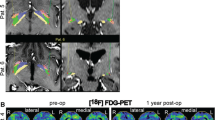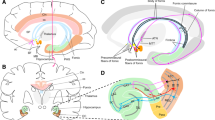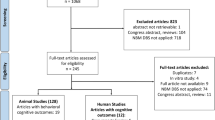Abstract
Recent studies have suggested deep brain stimulation (DBS) as a promising therapy in patients with Alzheimer’s disease (AD). Particularly, the stimulation of the forniceal area was found to slow down the cognitive decline of some AD patients, but the biochemical and anatomical modifications underlying these effects remain poorly understood. We evaluated the effects of chronic forniceal stimulation on amyloid burden, inflammation, and neuronal loss in a transgenic Alzheimer rat model TgF344-AD, as well as in age-matched control rats. 18-month-old rats were surgically implanted with electrodes in stereotactic conditions and connected to a portable microstimulator for chronic DBS in freely moving rats. The stimulation was continuous during 5 weeks and animals were immediately sacrificed for immunohistochemical analysis of pathological markers. Implanted, but non-stimulated rats were used as controls. We found that chronic forniceal DBS in the Tg-AD rat significantly reduces amyloid deposition in the hippocampus and cortex, decreases astrogliosis and microglial activation and lowers neuronal loss, as determined by NeuN staining. In control animals, the stimulation neither affects neuroinflammation nor neuronal count. In the Tg-F344-AD rat model, 5 weeks of forniceal DBS decreased amyloidosis, inflammatory responses, and neuronal loss in both cortex and hippocampus. These findings strongly suggest a neuroprotective effect of DBS and support the beneficial effects of targeting the fornix in Alzheimer’s disease patients.





Similar content being viewed by others
References
Benabid AL, Pollak P, Gervason C, Hoffmann D, Gao DM, Hommel M et al (1991) Long-term suppression of tremor by chronic stimulation of the ventral intermediate thalamic nucleus. Lancet Lond Engl 337:403–406
Blennow K, de Leon MJ, Zetterberg H (2006) Alzheimer’s disease. Lancet Lond Engl 368:387–403
Browning PGF, Gaffan D, Croxson PL, Baxter MG (2009) Severe scene learning impairment, but intact recognition memory, after cholinergic depletion of inferotemporal cortex followed by fornix transection. Cereb Cortex N Y 20:282–293
Burda JE, Sofroniew MV (2014) Reactive gliosis and the multicellular response to CNS damage and disease. Neuron 81:229–248
Cohen RM, Rezai-Zadeh K, Weitz TM, Rentsendorj A, Gate D, Spivak I et al (2013) A transgenic Alzheimer rat with plaques, tau pathology, behavioral impairment, oligomeric aβ, and frank neuronal loss. J Neurosci 33:6245–6256
Deuschl G, Schade-Brittinger C, Krack P, Volkmann J, Schäfer H, Bötzel K et al (2006) A randomized trial of deep-brain stimulation for Parkinson’s disease. N Engl J Med 355:896–908
Etiévant A, Lucas G, Dkhissi-Benyahya O, Haddjeri N (2015) The role of astroglia in the antidepressant action of deep brain stimulation [Internet]. Front Cell Neurosci. https://www-ncbi-nlm-nih-gov.proxy.unice.fr/pmc/articles/PMC4709450/. Accessed 17 Jan 2018
Fontaine D, Deudon A, Lemaire JJ, Razzouk M, Viau P, Darcourt J et al (2013) Symptomatic treatment of memory decline in Alzheimer’s disease by deep brain stimulation: a feasibility study. J Alzheimers Dis 34:315–323
Forni C, Mainard O, Melon C, Goguenheim D, Kerkerian-Le Goff L, Salin P (2012) Portable microstimulator for chronic deep brain stimulation in freely moving rats. J Neurosci Methods 209:50–57
Gondard E, Chau HN, Mann A, Tierney TS, Hamani C, Kalia SK et al (2015) Rapid modulation of protein expression in the rat hippocampus following deep brain stimulation of the fornix. Brain Stimul 8:1058–1064
Hamani C, McAndrews MP, Cohn M, Oh M, Zumsteg D, Shapiro CM et al (2008) Memory enhancement induced by hypothalamic/fornix deep brain stimulation. Ann Neurol 63:119–123
Hao S, Tang B, Wu Z, Ure K, Sun Y, Tao H et al (2015) Forniceal deep brain stimulation rescues hippocampal memory in Rett syndrome mice. Nature 526:430–434
Hescham S, Lim LW, Jahanshahi A, Steinbusch HWM, Prickaerts J, Blokland A et al (2013) Deep brain stimulation of the forniceal area enhances memory functions in experimental dementia: the role of stimulation parameters. Brain Stimul 6:72–77
Krack P, Batir A, Van Blercom N, Chabardes S, Fraix V, Ardouin C et al (2003) Five-year follow-up of bilateral stimulation of the subthalamic nucleus in advanced Parkinson’s disease. N Engl J Med 349:1925–1934
Laxton AW, Tang-Wai DF, McAndrews MP, Zumsteg D, Wennberg R, Keren R et al (2010) A phase I trial of deep brain stimulation of memory circuits in Alzheimer’s disease. Ann Neurol 68:521–534
Lövblad K-O, Schaller K, Vargas MI (2014) The fornix and limbic system. Semin Ultrasound CT MR 35:459–473
Lozano AM, Fosdick L, Chakravarty MM, Leoutsakos J-M, Munro C, Oh E et al (2016) A phase II study of fornix deep brain stimulation in mild Alzheimer’s disease. J Alzheimers Dis 54:777–787
Mallet L, Polosan M, Jaafari N, Baup N, Welter M-L, Fontaine D et al (2008) Subthalamic nucleus stimulation in severe obsessive–compulsive disorder. N Engl J Med 359:2121–2134
Mann A, Gondard E, Tampellini D, Milsted JAT, Marillac D, Hamani C et al (2017) Chronic deep brain stimulation in an Alzheimer’s disease mouse model enhances memory and reduces pathological hallmarks [Internet]. Brain Stimul. http://linkinghub.elsevier.com/retrieve/pii/S1935861X17309683. Accessed 4 Jan 2018
McGeer PL, Itagaki S, Tago H, McGeer EG (1988) Occurrence of HLA-DR reactive microglia in Alzheimer’s disease. Ann N Y Acad Sci 540:319–323
McKhann GM, Knopman DS, Chertkow H, Hyman BT, Jack CR, Kawas CH et al (2011) The diagnosis of dementia due to Alzheimer’s disease: recommendations from the National Institute on Aging-Alzheimer’s Association workgroups on diagnostic guidelines for Alzheimer’s disease. Alzheimers Dement J Alzheimers Assoc 7:263–269
Palop JJ, Mucke L (2010) Amyloid-beta-induced neuronal dysfunction in Alzheimer’s disease: from synapses toward neural networks. Nat Neurosci 13:812–818
Paxinos G, Watson C (2007) The rat brain in stereotaxic coordinates, 6. edn. Elsevier, Academic Press, Amsterdam
Ponce FA, Asaad WF, Foote KD, Anderson WS, Rees Cosgrove G, Baltuch GH et al (2016) Bilateral deep brain stimulation of the fornix for Alzheimer’s disease: surgical safety in the ADvance trial. J Neurosurg 125:75–84
Sankar T, Chakravarty MM, Bescos A, Lara M, Obuchi T, Laxton AW et al (2015) Deep brain stimulation influences brain structure in Alzheimer’s disease. Brain Stimul 8:645–654
Stone SSD, Teixeira CM, Devito LM, Zaslavsky K, Josselyn SA, Lozano AM et al (2011) Stimulation of entorhinal cortex promotes adult neurogenesis and facilitates spatial memory. J Neurosci 31:13469–13484
Suthana N, Haneef Z, Stern J, Mukamel R, Behnke E, Knowlton B et al (2012) Memory enhancement and deep-brain stimulation of the entorhinal area. N Engl J Med 366:502–510
Tsivilis D, Vann SD, Denby C, Roberts N, Mayes AR, Montaldi D et al (2008) A disproportionate role for the fornix and mammillary bodies in recall versus recognition memory. Nat Neurosci 11:834–842
Vann SD, Tsivilis D, Denby CE, Quamme JR, Yonelinas AP, Aggleton JP et al (2009) Impaired recollection but spared familiarity in patients with extended hippocampal system damage revealed by 3 convergent methods. Proc Natl Acad Sci USA 106:5442–5447
Vedam-Mai V, van Battum EY, Kamphuis W, Feenstra MGP, Denys D, Reynolds BA et al (2012) Deep brain stimulation and the role of astrocytes. Mol Psychiatry 17:124–131, 115
Wilson CRE, Baxter MG, Easton A, Gaffan D (2008) Addition of fornix transection to frontal–temporal disconnection increases the impairment in object-in-place memory in macaque monkeys. Eur J Neurosci 27:1814–1822
Xia F, Yiu A, Stone SSD, Oh S, Lozano AM, Josselyn SA et al (2017) Entorhinal cortical deep brain stimulation rescues memory deficits in both young and old mice genetically engineered to model Alzheimer’s disease. Neuropsychopharmacology 42:2493–2503
Acknowledgements
We wish to thank Dr. T. Town for providing access to the rats. This work has been developed and supported through the LABEX (excellence laboratory, program investment for the future) DISTALZ (Development of Innovative Strategies for a Transdisciplinary approach to ALZheimer’s) disease and the Hospital University Federation (FHU) OncoAge. We would like to warmly thank the anonymous donor who contributed significantly with several gifts to our study. This study has been supported by the “Harmonie Alzheimer” award (Fondation de l’Avenir, Harmonie Mutuelle), the “Société Francaise de Neurochirurgie” award and St Jude-Abott.
Author information
Authors and Affiliations
Corresponding author
Ethics declarations
Conflict of interest
The authors declare that they have no conflict of interest.
Ethical standards
All applicable European guidelines for the care and use of animals were followed. This study was approved by the Institute Animal Care Committee. All experiments are in accordance with the European Communities Council Directive of November 24, 1986 (86/609/EEC).
Studies involving human and animal participants
All procedures performed in studies involving animals were in accordance with the ethical standards of the institution or practice at which the studies were conducted.
Rights and permissions
About this article
Cite this article
Leplus, A., Lauritzen, I., Melon, C. et al. Chronic fornix deep brain stimulation in a transgenic Alzheimer’s rat model reduces amyloid burden, inflammation, and neuronal loss. Brain Struct Funct 224, 363–372 (2019). https://doi.org/10.1007/s00429-018-1779-x
Received:
Accepted:
Published:
Issue Date:
DOI: https://doi.org/10.1007/s00429-018-1779-x




